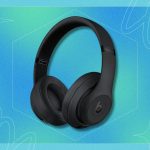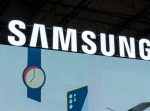From today’s decision by Judge Scott Googler (N.D. Ala.) in Spears v. New York Times Co. (for more on the earlier correction in the case, see here):
On the night of January 14, 2023, Spears and his two high school friends, Dylan Serafini and Esai Morse, went to the popular student gathering area called “The Strip” located on University Boulevard in Tuscaloosa, Alabama, following the Alabama-LSD basketball game. At the time, Spears was a freshman at The University of Alabama and played guard on the Alabama basketball team. At 12:30 a.m., Spears and his friends met up outside of Houndstooth Bar with one of Spears’s teammates, Brandon Miller, and were also joined at some point by the team’s student manager, Cooper Lee. After meeting up, they drove to Moe’s Original BBQ in downtown Tuscaloosa where they stayed until 1:40 a.m. While at Moe’s BBQ, Spears FaceTimed another teammate, Jaden Bradley, who invited Spears and his friends to join Bradley and others.
After declining the invitation to go out, Spears and his friends drove back to his dorm room while Miller and Lee drove to The Strip in Miller’s car. At 1:48 a.m., Spears FaceTimed Bradley again to see where they had gone, which is when Spears learned that there had just been a shooting on The Strip and bullets had struck Miller’s windshield. Later that day, Tuscaloosa police investigated the incident and interviewed members of the basketball team who were out the night before, including Spears. Police ultimately charged two men in relation to the shooting. No one else, including Spears, was charged.
In its investigation of the incident, The Times learned that surveillance video showed two people “were struck by bullets in the crossfire,” and that a “detective also made note of an unidentified passenger in Miller’s car.” In March, a confidential source “familiar with the case” purportedly told The Times that Spears was the unidentified passenger in Miller’s car at the time of the shooting.
On March 15, a reporter for The Times approached Spears and asked, “The night of the shooting, when you were in Brandon Miller’s car, were you scared when the shots were fired?” Spears replied, “No comment.” The reporter then asked Spears if he wanted to comment on his presence the night of the shooting to which Spears again replied, “No comment.”
Later that night, The Times published an article describing Spears’ s alleged presence at the shooting with the headline: “A Fourth Alabama Player Was at a Deadly Shooting, in a Car Hit by Bullets.” The article included various statements about Spears’s alleged involvement, such as, “[i]n another car that was struck were Brandon Miller, a star player for the Crimson Tide, and Kai Spears, a freshman walk-on whose presence at the scene had not been previously reported,” and “[i]ncluding Spears, at least four Alabama players have now been placed at the scene of the shooting that took place in the early morning hours of Jan. 15….” Following publication, representatives of The University of Alabama and affiliates of Spears told The Times that Spears was not present at the shooting. On March 20, Spears’s attorney requested a public retraction of the statements pursuant to Ala. Code § 6-5-186, which The Times declined.
Spears sued, and the court let his libel claim go forward:
When printed defamatory language “exposes the plaintiff to public ridicule or contempt, though it does not embody an accusation of crime,” damages are presumed and libel is actionable per se [under Alabama law, with no need to prove specific damages]…. “The question of whether an article is libel per se is identical to the question [of] whether the article is defamatory.” …
The test for determining whether an article is defamatory is “whether an ordinary reader or a reader of average intelligence, reading the article as a whole, would ascribe a defamatory meaning to the language.” … The Times argues that the article depicts Spears as a potential victim of the shooting and, therefore, it is not defamatory. Indeed, the article does not expressly accuse Spears of any crime. Instead, it identifies Spears as one of “two players [who] were in a car struck by bullets in the crossfire.” The article claims that the shooting “could have been even more deadly” in that ” [t]wo bullets struck the windshield of Miller’s car” but”[n]either struck Miller or Spears.” Read alone, these statements do not appear reasonably capable of conveying a defamatory meaning. However, they must be read in the context of “the article as a whole.”
As Spears argues, an ordinary reader, reading the article as a whole, could reasonably ascribe to it the implied suggestion that Spears was somehow complicit in the shooting. The article refers to multiple members of the basketball team—including Spears—as being “involved” in the “fatal January shooting.” It further claims that the University “kept quiet” those players’ involvement in the shooting. The article also places Spears “at the scene of the shooting” and in the car that transported the gun used in the shooting:
[A police detective] said that Miles had texted Miller, telling him to pick him up and that “I need my joint,” referring to Miles’ s gun, which he had left in the back seat of Miller’s car.
The detective also made note of an unidentified passenger in Miller’s car. A person familiar with the case identified that person as Spears.
Taken together, these statements could reasonably be read as implying that Spears was reprehensibly “involved” in the shooting. As such, the language could “expose[] [Spears] to public ridicule or contempt, though it does not embody an accusation of crime.”
The court rejected, however, Spears’ false light invasion of privacy claim, because that claim requires (under Alabama law) a showing of so-called “actual malice”—i.e., a showing that the defendant knew the statement was false or at least likely false—and the court concluded that Spears hadn’t adequately alleged facts supporting such knowledge on the Times’ part. The actual malice issue might come up later with regard to the defamation claim, especially if Spears is found to be a public figure. But at this point in the lawsuit, the Times didn’t make such an argument; to quote the motion to dismiss,
On this motion, The Times advances this argument regarding the lack of actual malice only with respect to the claim for false light invasion of privacy, for which it is an element of the cause of action for every plaintiff. Although actual malice is frequently an element discussed in the context of public-figure defamation claims, The Times does not assert the public-figure status of Spears in this motion, which is based solely on the pleadings and materials properly incorporated therein (like the Challenged Report). Should this action proceed, however, The Times would expect the plaintiff’s public-figure status to be a subject of discovery.
The post Alabama Basketball Player’s Libel Lawsuit Against <i>New York Times</i> Can Go Forward appeared first on Reason.com.






